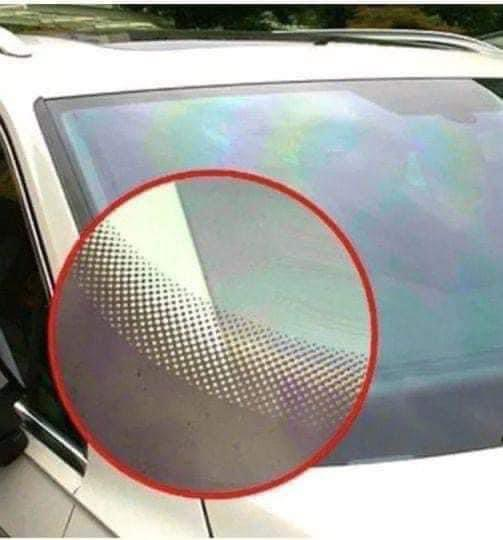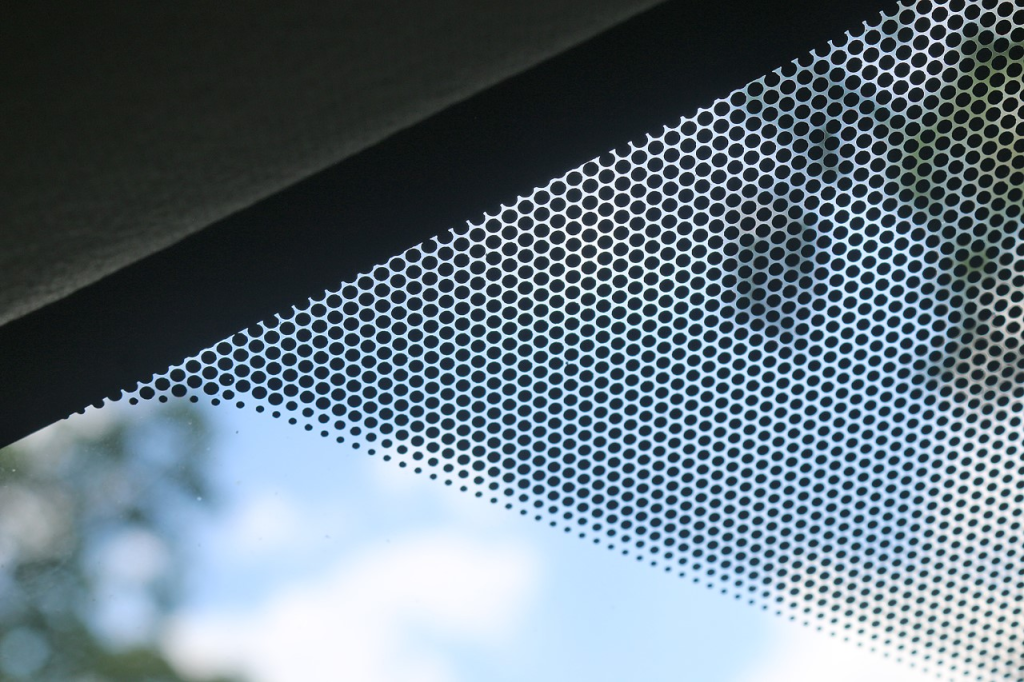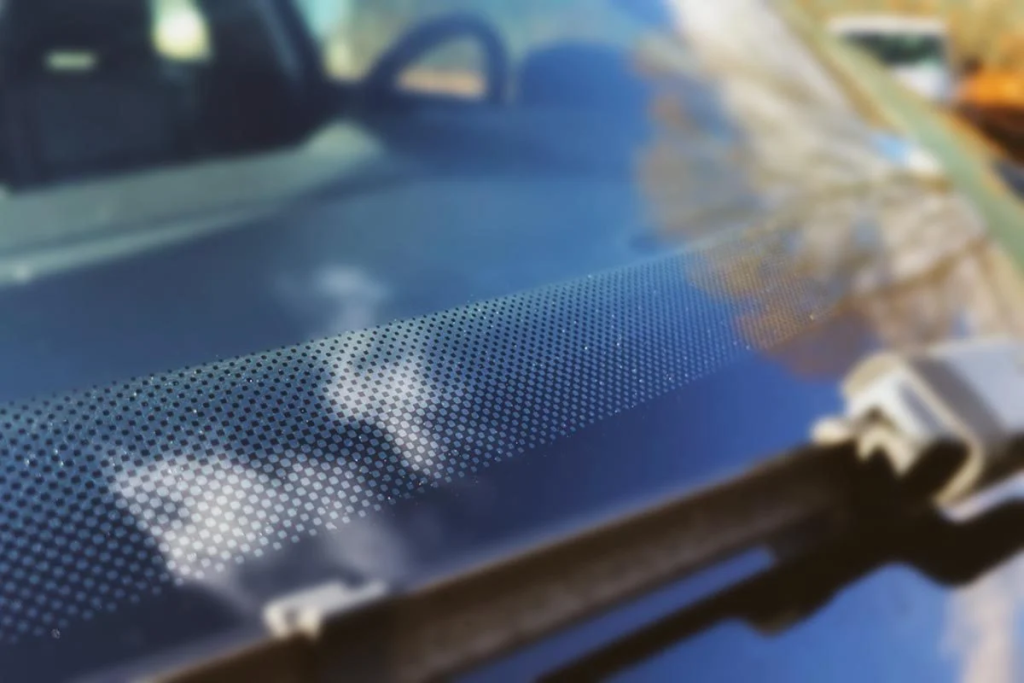Have you ever noticed those little black dots around the edge of your car’s windshield? They’re easy to overlook, but once you see them, you can’t unsee them. You might wonder—why are they even there? Are they just for decoration, or do they serve a practical purpose?
Well, buckle up! These seemingly insignificant dots are actually a marvel of automotive engineering. Not only do they have a functional role, but they also enhance the durability and appearance of your windshield. Let’s dive into the fascinating world of these mysterious black dots and discover why they’re essential to your car.

What Are Those Black Dots Called?
The black dots on your car’s windshield are part of what’s known as the frit band. This band consists of a series of black enamel dots, which are baked directly onto the glass during the manufacturing process. The frit band is typically located around the edge of the windshield, transitioning from solid black to a dotted pattern.
These dots are not just randomly placed—they are carefully designed and engineered to serve multiple purposes. While they may look like a simple aesthetic feature, they actually play a crucial role in your car’s safety and functionality.
Video: Why Do Windshields Have Those Small Black Dots?
The Primary Function: Keeping Your Windshield in Place
The frit band’s main job is to secure the windshield to your car’s frame. It may sound simple, but it’s actually a vital aspect of your vehicle’s safety.
Enhanced Adhesion: The frit band creates a rough, textured surface on the glass, which helps the adhesive bond more effectively. This improved grip ensures that the windshield stays securely in place, even during sudden impacts or harsh weather conditions.
Durable Bonding: The black enamel dots are made from a ceramic-based paint that is resistant to heat and weather, making the bond between the glass and the car’s frame more durable and long-lasting.
Sun Protection: The solid black part of the frit band also acts as a UV shield, protecting the adhesive underneath from the sun’s harsh rays. This prevents the adhesive from deteriorating over time, keeping the windshield securely attached.
Without this frit band, the windshield would be more susceptible to coming loose, especially after prolonged exposure to heat and sunlight. So, the next time you see those dots, remember—they’re literally holding your windshield in place!
The Optical Illusion: Preventing Distortion
Ever noticed how the dots seem to fade as they move from the black band toward the clear glass? This isn’t just a stylish touch—it’s a clever way to prevent optical distortion.
The transition from solid black to dotted pattern helps distribute the heat more evenly during the manufacturing process. Without this gradual change, the sudden temperature difference between the black edge and the clear glass could cause lensing—a visual distortion that makes straight lines appear curved.
By using a dot matrix pattern, manufacturers ensure that the windshield maintains clear, accurate visibility without any strange optical effects. It’s a small detail that makes a big difference when it comes to driving safety.
Aesthetic Appeal: Blending Function with Style

Let’s be honest—those black dots also look pretty cool. The gradient effect they create provides a smooth transition from the dark, opaque edge to the clear, transparent glass. This isn’t just for looks—it also serves a practical purpose.
The dots make the windshield’s edge less harsh on the eyes, creating a visually pleasing frame around your view. This blending technique makes the windshield appear more integrated into the car’s design, giving it a sleek, modern look.
Some drivers even say that the dots add a touch of elegance, giving the windshield a more refined appearance. Whether intentional or not, this aesthetic choice has become a recognizable feature of modern vehicles.
Temperature Regulation: Keeping the Glass Safe
Believe it or not, the black dots also help manage temperature changes on your windshield. During the glass-curing process, the solid black band absorbs more heat than the transparent glass, which could lead to cracks or warping.
The dot matrix acts as a buffer zone, gradually distributing the heat from the black band to the clear glass. This even distribution prevents sudden temperature changes, which can weaken the structural integrity of the windshield.
In other words, those little black dots help your windshield survive the manufacturing process and endure everyday environmental challenges. It’s one of those details that automakers don’t talk about often but is crucial for maintaining the windshield’s longevity.
Safety Benefits: More Than Just Looks

Aside from keeping the windshield securely in place, the frit band also plays a role in passenger safety. During a collision, the windshield needs to stay intact to maintain the car’s structural integrity.
The improved adhesive bond provided by the frit band ensures that the windshield doesn’t easily detach, which could compromise the roof’s strength in a rollover accident. It’s a small but essential part of keeping you and your passengers safe on the road.
Why You Should Appreciate Those Black Dots
The next time you get into your car and glance at your windshield, take a moment to appreciate those black dots. They are more than just a visual detail—they are a vital component of your vehicle’s engineering.
From enhancing adhesion to preventing heat damage, these dots play a crucial role in keeping your windshield intact and looking good. It’s a perfect example of how even the smallest design choices can make a big difference.
Conclusion: A Clever Blend of Function and Design
Those little black dots on your car’s windshield are more than just decorative—they are a brilliant blend of functionality and style. They secure the glass, protect it from UV rays, manage temperature changes, and even add a touch of aesthetic appeal.
Now that you know their purpose, you’ll never look at your windshield the same way again. Next time someone asks about those mysterious dots, you’ll be the expert, ready to share the fascinating story behind this tiny yet significant detail


